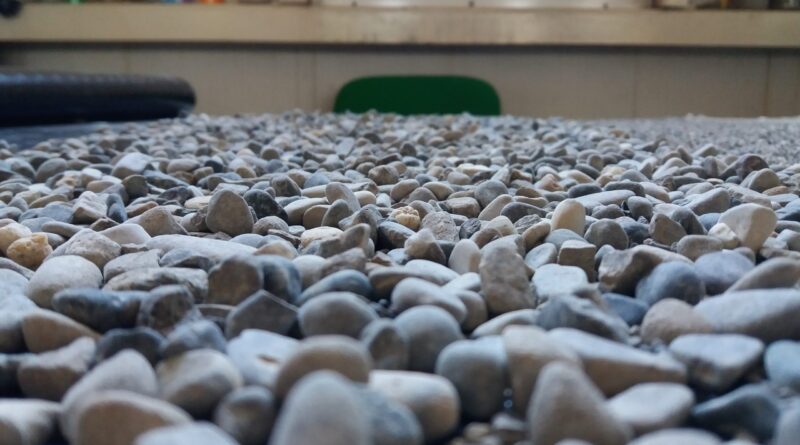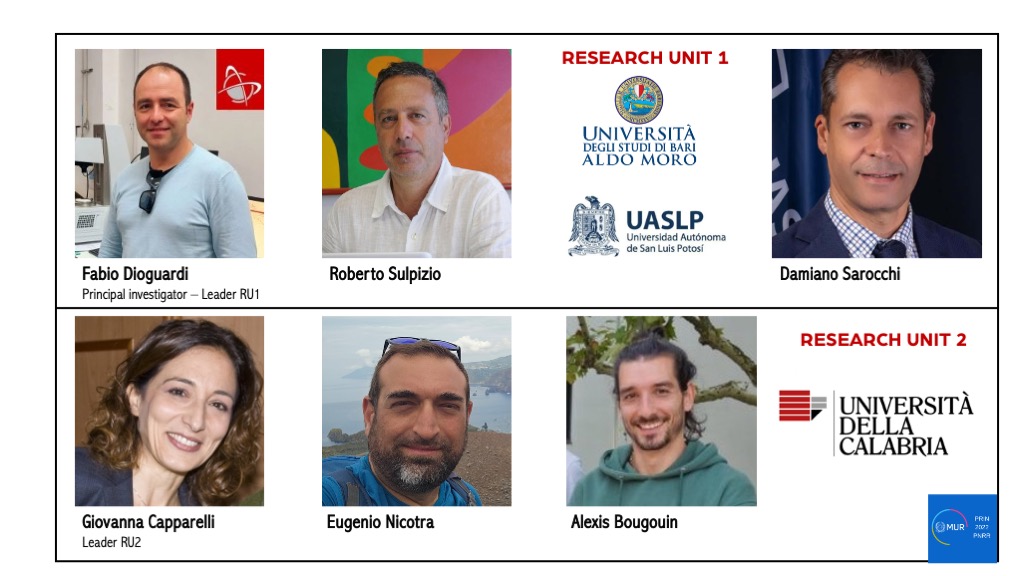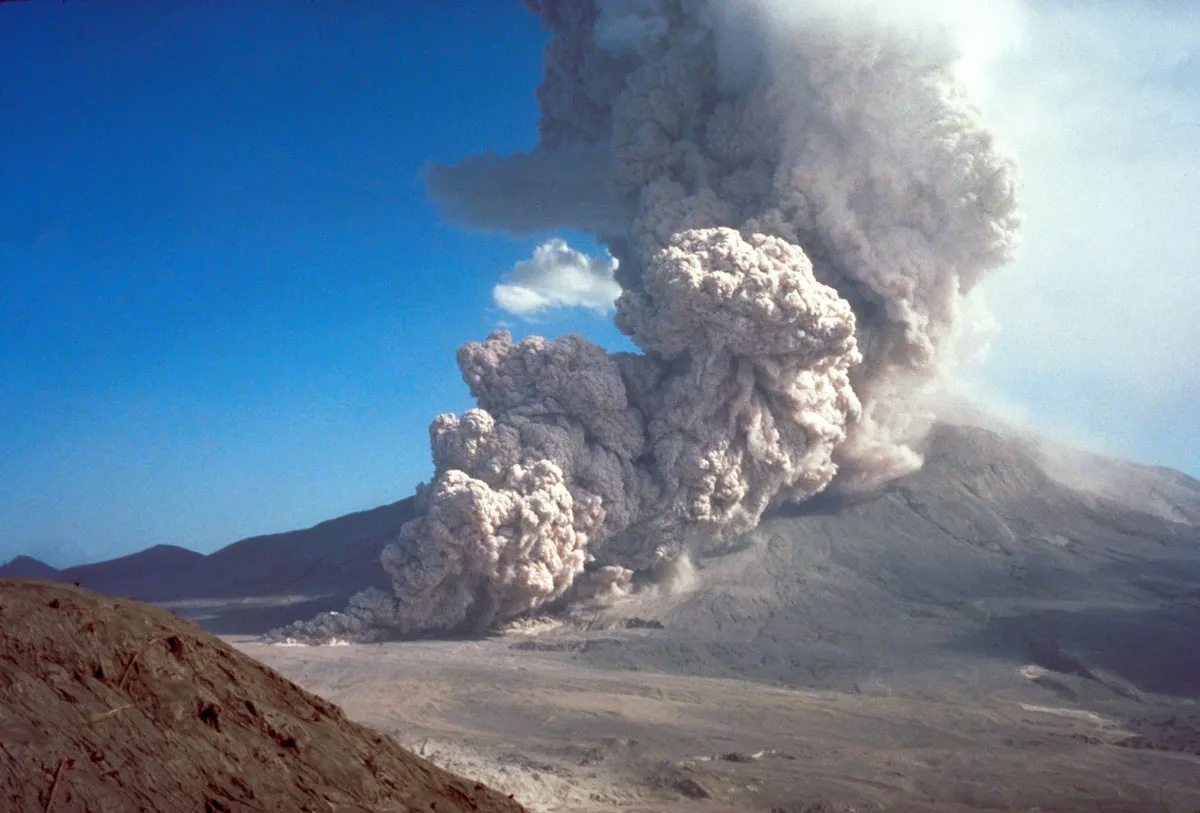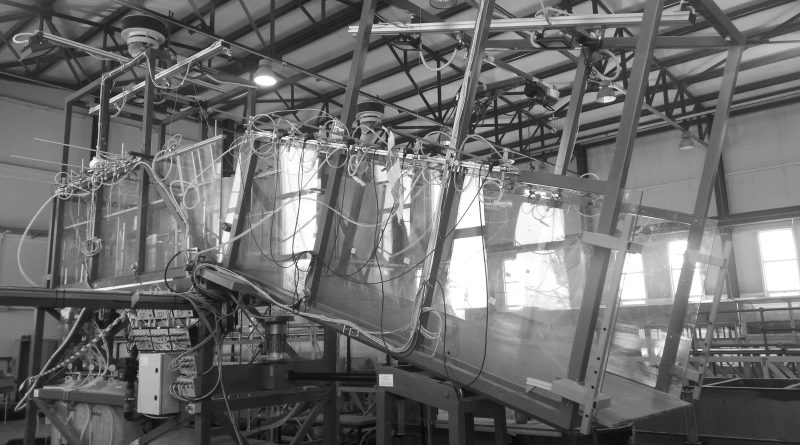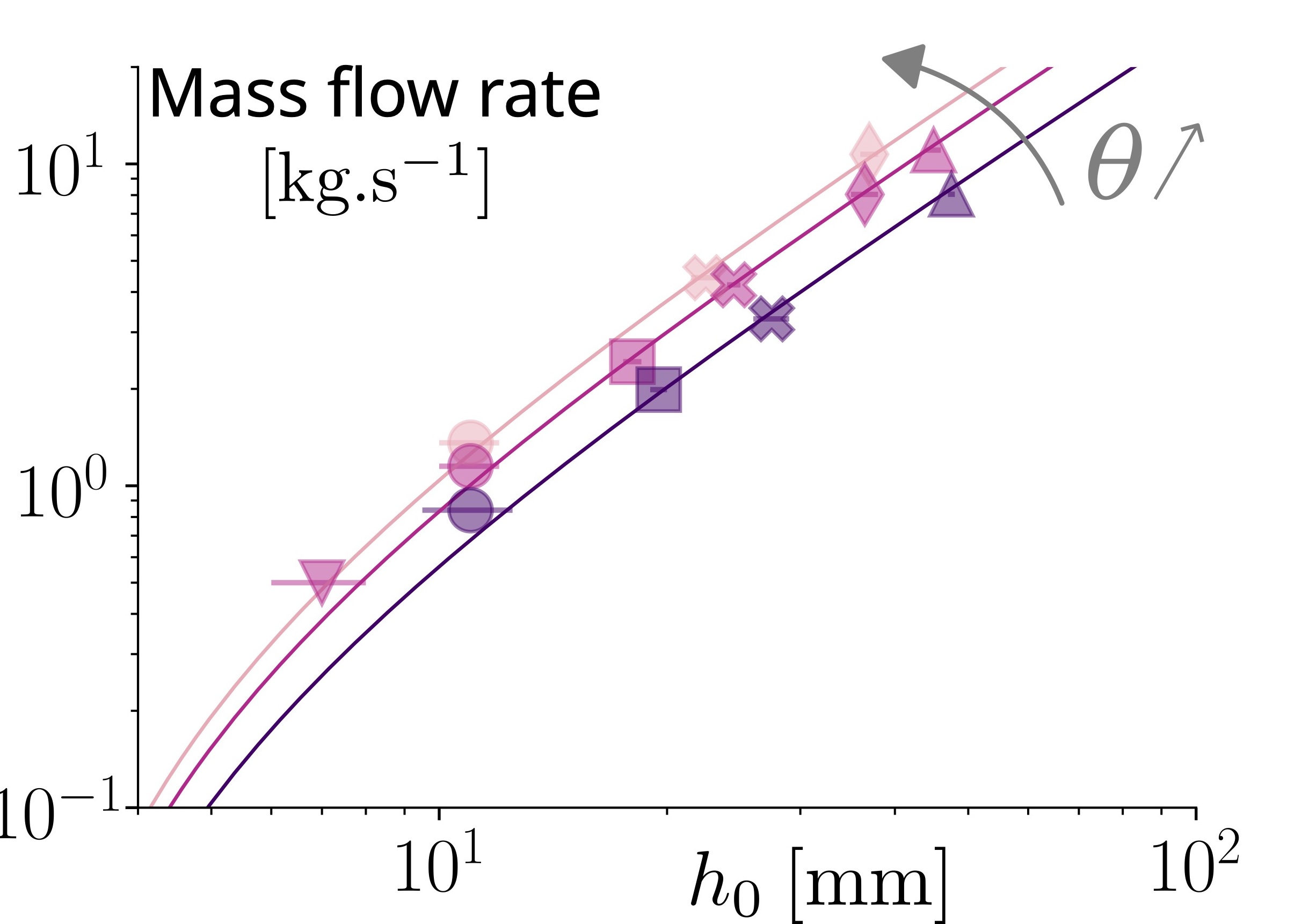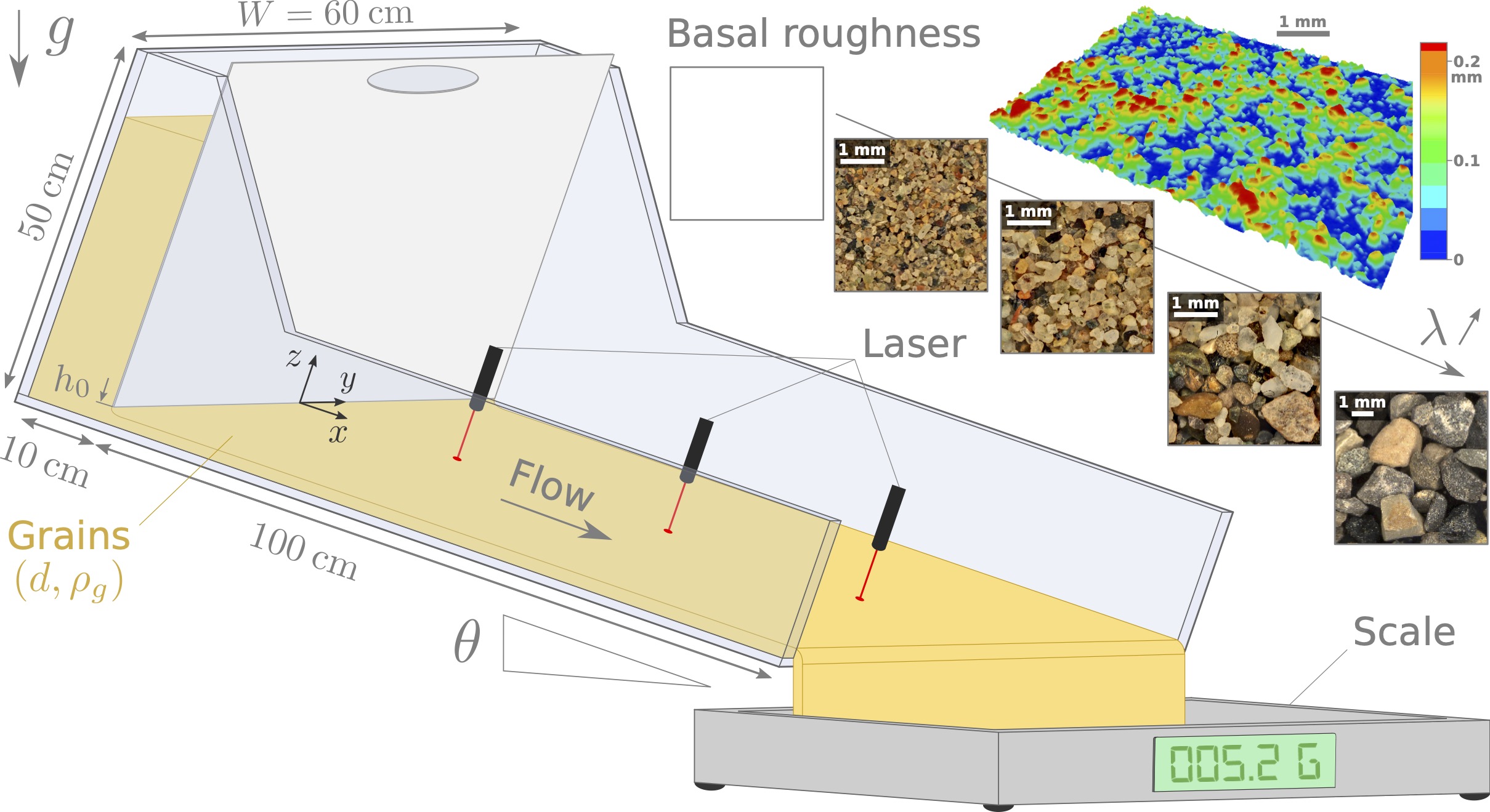Results in progress

Here follows a brief description of the ongoing results achieved by the IMPROVE Projects
1. Analysis of the data of the experimental campaign carried out during the first quarter at LAIMA laboratory of University of San Luis Potosì (Mexico)
This experimental campaign carried out at LAIMA laboratory of University of San Luis Potosì, Mexico (hosted by the project partner Prof. Damiano Sarocchi), called ‘Mexican Unsteady Fast Flows’, focused on fast and unsteady bi-disperse granular flows of natural materials along an inclined plane, for which macroscopic and local quantities were measured using cameras, pore pressure sensors, load cells, and laser gauges. This experimental campaign was divided into three sets of experiments, in which the bottom roughness, the fine-to-coarse grain size ratio, and the fine-to-coarse grain proportion were varied independently. The most important factor affecting the flow dynamics was found to be the bottom boundary condition. More specifically, the presence of a rough bottom reduces the mobility (e.g., front velocity) of granular flows, and deposits are less extensive, compared with a smooth bottom configuration. Specifically, different mono- and bi-disperse mixtures were used to study the behaviour of the granular flows under various conditions: i) ratio between the coarser and finer solid phases (dratio); ii) weight percentage of the fine content (wt%fine). The first insights we obtained in this quarter indicated that: 1) the greater dratio and wt%fine, the lower the velocity and the runout of the granular flows; 2) variations in dratio seem to influence the pore pressure generated at the flow base more than changes in wt%fine; 3) granular mixtures with a wt%fine ≥ 25 % seem to be able to retain air at the flow base maintaining the gas pressures; 4) mixtures at changing dratio and wt%fine result in a different flow evolutions characterized by thickening and thinning alternances and by thick or wedge-shaped flow fronts; 5) a fine-rich basal layer has a dual an opposite effect on the flow mobility on the basis of an initial fluidization of the same one. Hence, the carried out large-scale experiments extend the well consolidated bibliography on the effects of the fine-rich basal layer on the granular flows’ behaviour revealing new insights on its role in the granular flow dynamics. However, we decided to organise a new experimental campaign in January 2025 at UASLP to further clarify some of these aspects and to cross-check the significance of the measured pore pressures, since these were always very low to negligible, although significantly higher than the sensitivity of the employed pressure sensors. RU1 and RU2 are in constant engagement if UASLP’s partners in order to arrange the new experiments. Finally, in light of the experience gained during the experimental campaign carried out in the framework of this project, we resumed the analysis of data from past experiments carried out with the same setup, with the aim at obtaining insight on the propagation of polydisperse granular flows. Specifically, we investigated the effect of grainsize distribution on the runout and deposition of the investigated flows.
2. Development of the experimental setup at CamiLab of the University of Calabria (quarter Q3-Q4)
RU2 purchased and received the granular material to be used in the planned large-scale experiments. They are six different sizes of bulding grains ranging from ~0.1-0.2 mm to ~1-2 cm (two orders of magnitude in variation), each of 1.5 tonnes. Preliminary tests were carried out with these granular materials in the small-scale flume, covering the bottom with different rough carpets made of the same grains (Fig. 1a-b). More specifically, the aim was to measure the thickness of a homogeneous layer of grains, which flows when a slope angle of θ(hstart) is reached and stopping with a thickness of hstop (Fig. 1c), being representative of internal and basal friction. Moreover, this setup allows us to determine rheological parameters of grains in the aim of simulating experiments.
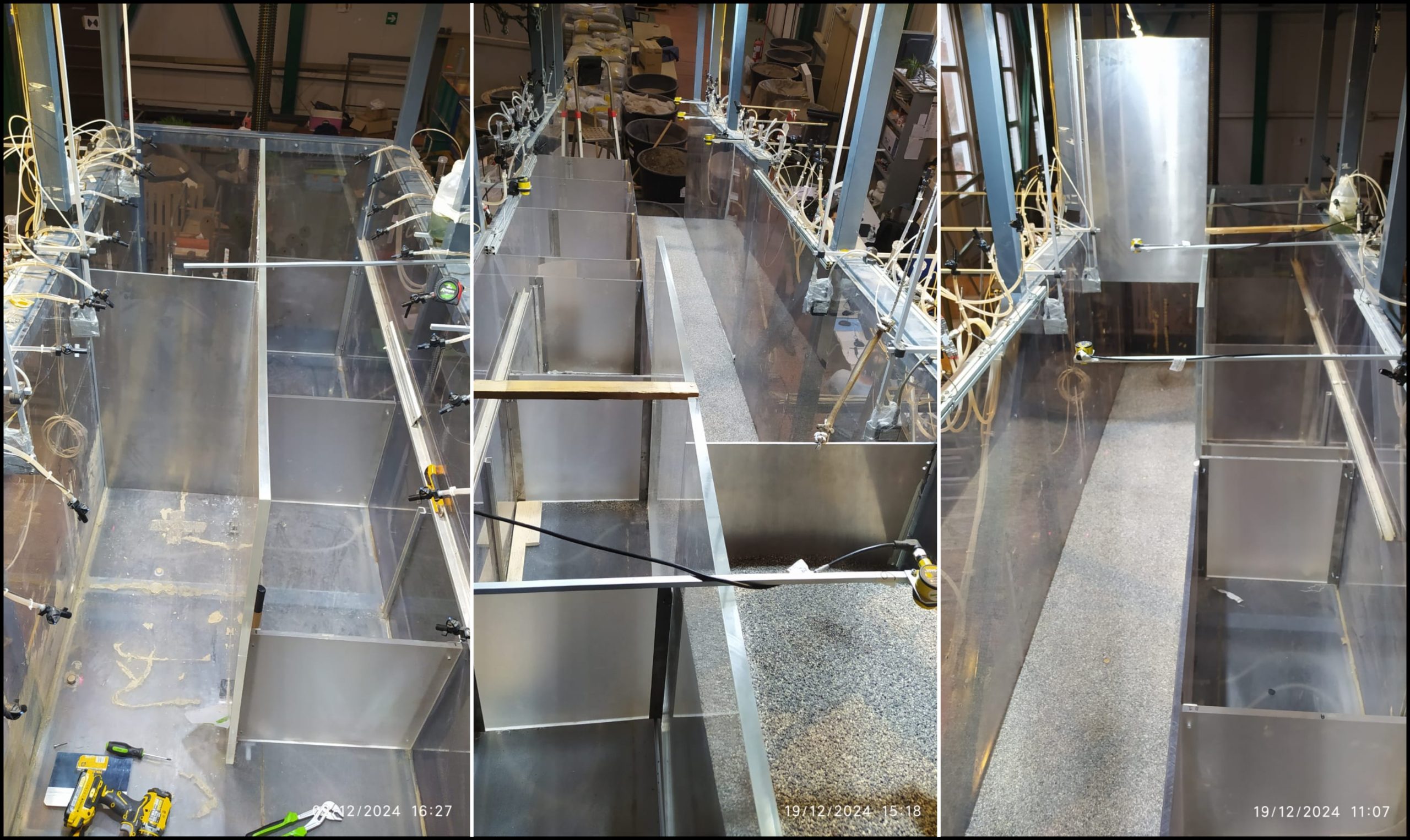
The large-scale flume was equipped with six Keller 9FL piezoresistive pressure sensors, deployed at the bottom of the channel, every metre starting at 50 cm from the backwall. The alignment of the pressure sensor was positioned at 25 cm from the left wall, since we will carry out experiments in the left half section of the channel (50 cm width). Figure 2 shows the pressure sensor installation.
The pressure sensors were thoroughly calibrated both statically and dynamically. The static calibration was carried out with the Unomat MCX II / PM calibrator, which is equipped with a pressure transducer with a maximum measurable pressure of 35 kPa. The dynamic calibration was carried out with a piezoelectric reference Kistler 7261 sensor, which has a high sensitivity, connected to a HBK 2635 amplifier. The latter is needed in order to verify the capability of the pressure sensors to operate in an extended frequency band above 30 Hz.
The construction of the dam-break configuration also allows mitigating potential delays in the beginning of the large-scale experiments. Thanks to this configuration, we can proceed with large-scale experiments in the near future.
For the modelling activities planned for the WP2, RU1 continued the improvement of the selected depth-averaged model, namely IMEX_SfloW2D v2 (de’ Michieli Vitturi et al., 2023, hereafter referred to as IMEX for simplicity). In particular, with introduced a new boundary condition called “hydrograph”, which allows controlling the unsteady inlet of granular material in the computational domain from a lateral surface in time. With this new implementation, it is possible to vary the mass flow rate and thickness of the granular material entering the domain over time, hence simplifying the simulations of experiments in which the material is released from a vertical hopper, fall onto the chandevelops a granular flow downstream. Such a process cannot be directly simulated with a shallow-water model, which is inherently 2D and, therefore, cannot capture vertical movements. Thanks to this implementation, by monitoring the velocity and thickness of the flow close to the channel inlet, one can initialize the flow from that location. With the previously completed implementation of the mu-I rheology (Jop et al., 2006; Barker and Gray, 2017), we now have everything needed to simulate the experiments with the shallow-water modelling approach. This tool will be used extensively during the second year of the project.
Outreach activity will be certainly one of the most of the combined School/Workshop organized by RU2 with the collaboration of RU1 in September 2025. The event will be hybrid in terms of the modality of participation: the first three days will be spent at the University of Bari in the form of “School”, with the intervention of national and international researcher expert with the themes of the present project. The last 2 days will be held at the Università della Calabria, at the CAMILAB laboratory, where in the form of a workshop some demonstration experiments will be conducted.
All the conducted experiments will be shared in specific scientific platforms (e.g., Researchgate) and on the project’s webpage, in order to achieve the outreach and dissemination aims of the project.
Furthermore, the project website is currently under development to include results of the experimental campaigns already carried out and to take into account the feedback received by the evaluation committee. The required modifications will be implemented by the end of Q4.
3. Progress of Activity for quarter Q5
For the experimental activities planned in WP1, both RUs focused on the experiments at the CamiLab of the University of Calabria. Specifically, during this quarter, RU2, in collaboration with RU1, carried out two main experimental campaigns. The first one consisted of small-scale experiments on steady granular avalanches composed of various granular materials, ranging from idealized glass beads to natural sand and volcanic material, propagating down a variety of inclines, from bare plexiglass to millimetre-sized grain glued surfaces. The aim was to establish a relevant criterion for characterizing the basal condition based on the properties of both the flowing material and the substrate. The propagation and deposit dynamics of the avalanches were then described from theoretical modeling, while revealing the minimal set of physical parameters required to model them. This work has been submitted in Journal of Geophysical Research: Solid Earth. Building on these findings, a second set of experiments was performed in the large-scale flume, involving the sudden release of a large volume, a quarter of a cubic metre, of grains of varying sizes down different rough slopes. The ongoing analysis of these experiments aims to assess the influence of the basal condition on unsteady granular flows and to provide a valuable benchmark for numerical modeling.
For the modelling activities planned for the WP2, RU1 carried out numerical simulations of the campaign at CamiLab with IMEX_SfloW2D v2 (de’ Michieli Vitturi et al., 2023, hereafter referred to as IMEX for simplicity) modified with the implementation of the mu-I rheology (Jop et al., 2006; Barker and Gray, 2017) already presented in the previous reports. The dataset consisted of 24 experiments carried out with different grainsizes dp, basal roughness and slopes α. Given a certain degree of uncertainty in setting the granular material bulk density ρm at rest before the dam-break experiments, which is one of the most important parameters in initializing the simulations with IMEX_SfloW2D, we first carried out a sensitivity analysis to check if the uncertainty in the bulk density affected the simulation outputs, specifically the final deposit thickness h. In the experiments we used mainly two types of particles with a median grainsize of 0.0026 and 0.00027 m, respectively. For the two granular materials we quantified an uncertainty of 3.4% and 6.4%, respectively. We then selected two experiments carried out with a slope of 0º and 30º for each granular material and repeated the simulations changing the bulk density based on its uncertainty. Fig. 1 shows the resulting deposit for all the simulations.

Figure 1. Results (deposit thickness vs. distance) for all the simulations carried out in the sensitivity analysis.
The results shown in fig. 1 prove that the uncertainty in the bulk density do not affect the resulting deposit’s thickness, therefore we could proceed with the simulations.
The numerical simulations carried out in this quarter aimed at finding, for each experiment producing a deposit, the combination of the three rheological parameters of the mu-I rheology (μs, μd and I0) that resulted in the best agreement between the observed and simulated deposit thickness along the flume. The final purpose of this preliminary investigation is to compare the values of the three parameters with those measured in the small flume experiments and find the reason of any possible discrepancy. The latter would raise a warning against the typical approach used in geophysical flows simulations, in which the rheological parameters are often estimated a-posteriori by finding the best fit between simulated and observed deposit and then used for hazard simulations. Figure 2 shows an example of the simulated and observed deposit in the best fit simulation of one experiment.

Figure 2. Best match simulation of one experiment. The solid and dashed lines represent the simulated and observed deposit thickness, respectively.
Table 1 lists the resulting three values of the three parameters (μs, μd and I0) obtained in the best-match simulations for all the experiments, together with the main input data and the resulting internal (θ1) and basal (θ2) friction angles. These values will be compared with those measured independently in the small flume by considering the propagation dynamics and deposition of steady granular avalanches on a rough surface made of the same grains as those flowing. We can already report significant variations in the three rheological parameters obtained from the numerical simulations compared with those derived from the experiments. For instance, we find that θ1 is approximately determined by the angle of repose of the granular materials, which remains relatively constant in experiments, and vary significantly in simulations.
Table 1. Main input parameters and values of the mu-I rheology parameters for the best match simulation for each experiment.
| ID | H [m] | dp [m] | θr | C | α [°] | μs | θ1 [°] | μd | θ2 [°] | I0 |
| 6 | 0.506 | 0.00260 | 33.3 | 0.572 | 0.0 | 0.9 | 42.0 | 1 | 45.0 | 0.1 |
| 7 | 0.513 | 0.00260 | 33.3 | 0.564 | 10.0 | 0.7 | 35.0 | 1 | 45.0 | 0.1 |
| 8 | 0.498 | 0.00260 | 33.3 | 0.581 | 20.0 | 0.6 | 31.0 | 0.8 | 38.7 | 0.1 |
| 9 | 0.501 | 0.00260 | 33.3 | 0.578 | 30.0 | 0.5 | 26.6 | 0.8 | 38.7 | 0.1 |
| 11 | 0.503 | 0.00027 | 32.2 | 0.587 | 0.0 | 1 | 45.0 | 1 | 45.0 | 0.6 |
| 12 | 0.523 | 0.00027 | 32.2 | 0.564 | 10.0 | 0.8 | 38.7 | 1 | 45.0 | 0.1 |
| 13 | 0.501 | 0.00027 | 32.2 | 0.589 | 20.0 | 0.7 | 35.0 | 0.2 | 11.3 | 0.6 |
| 14 | 0.503 | 0.00027 | 32.2 | 0.587 | 30.0 | 0.6 | 31.0 | 0.5 | 26.6 | 0.9 |
| 16 | 0.496 | 0.00260 | 33.3 | 0.584 | 30.0 | 0.6 | 31.0 | 0.6 | 31.0 | 0.1 |
| 17 | 0.496 | 0.00260 | 33.3 | 0.584 | 30.0 | 0.6 | 31.0 | 0.6 | 31.0 | 0.1 |
| 18 | 0.496 | 0.00027 | 32.2 | 0.595 | 10.0 | 0.8 | 38.7 | 1 | 45.0 | 0.1 |
| 19 | 0.506 | 0.00027 | 32.2 | 0.583 | 0.0 | 1 | 45.0 | 1 | 45.0 | 0.6 |
| 20 | 0.504 | 0.00027 | 32.2 | 0.586 | 20.0 | 0.7 | 35.0 | 0.2 | 11.3 | 1 |
| 21 | 0.504 | 0.00027 | 32.2 | 0.586 | 30.0 | 0.6 | 31.0 | 0.7 | 35.0 | 1 |
| 23 | 0.490 | 0.00260 | 33.3 | 0.590 | 0.0 | 0.8 | 38.7 | 1 | 45.0 | 0.1 |
| 24 | 0.500 | 0.00260 | 33.3 | 0.578 | 20.0 | 0.6 | 31.0 | 0.9 | 42.0 | 0.1 |
| 25 | 0.495 | 0.00260 | 33.3 | 0.584 | 10.0 | 0.7 | 35.0 | 1 | 45.0 | 0.1 |
| 26 | 0.495 | 0.00260 | 33.3 | 0.584 | 30.0 | 0.7 | 35.0 | 0.2 | 11.3 | 0.2 |
| 28 | 0.503 | 0.00027 | 32.2 | 0.587 | 30.0 | 0.6 | 31.0 | 0.7 | 35.0 | 0.9 |
| 29 | 0.493 | 0.00087 | 34.3 | 0.652 | 20.0 | 0.6 | 31.0 | 1 | 45.0 | 0.1 |
RU2, in collaboration with RU1, continued the activities for the organization of the “Workshop on geophysical flows: from the laboratory to the nature” as part of the joint workshop “Workshop on experimental and numerical modelling approaches to investigate gravity flows” to be held in Bari on 15-17 September 2025 and Rende (CS) on 17-19 September 2025. The workshop is organized in collaboration with another PNRR-funded project (RETURN). The event was also sponsored and supported by the Italian Association of Volcanology (AIV). The organizing committee is composed as follow:
- Eugenio Nicotra (University of Calabria)
- Fabio Dioguardi (University of Bari “Aldo Moro”)
- Giovanna Capparelli (University of Calabria)
- Roberto Sulpizio (University of Bari “Aldo Moro”)
- Pierfrancesco Dellino (University of Bari “Aldo Moro”)
- Alexis Bougouin (University of Calabria)
The tentative schedule of the workshop is as follows:
Day 1: Welcome speeches, invited talks, PhD-ECR day.
Day 2: Invited talks. Visit to the University of Bari experimental facilities.
Day 3: Departure to University of Calabria for the second part of the event. Demonstration experiment with the large-scale flume setup developed within this project.
Day 4: Round table discussions on selected topics relevant to the workshop
Day 5: departure to Bari, end of works.
The final list of speakers with tentative titles of their talks is as follows:
- Alexis Bougouin, University of Calabria, Italy. Laboratory modelling of gravity-driven flows: The emblematic dam-break configuration
- Thomas Jones, University of Lancaster, United Kingdom. Particle size and shape modification in granular flows and the associated impact on flow properties (e.g., rheology, permeability)
- Francisco Rocha, Aix Marseille University, France. The mechanics of granular avalanches
- Franco Antonio Tapia Uribe, Technische Universität Dresden, Germany. Rheology of Dense Suspensions in Two-Phase Modeling for Bedload Transport
- Lizeth Caballero Garcia, Universidad Nacional Autonoma de Mexico, Mexico. Calibration of lahar numerical models: The challenge of limited data
- Nikhil Nedumpallile Vasu, British Geological Survey, United Kingdom. Multi-scale modelling of rainfall triggered debris flows. Case studies from diverse geoenvironmental settings
- Damiano Sarocchi, Universidad Autonoma de San Luis Pososì, Mexico. Principles and Applications of Quantitative Textural Analysis
- Roberto Sulpizio, University of Bari, Italy. From laboratory experiments to the field: the use of laboratory data for understanding the real flows
All the results and updates on the project are being shared via the project’s webpage and the new Instagram page: https://www.instagram.com/prin2022.improve.
The two RUs met regularly online and in person at the CamiLab.


